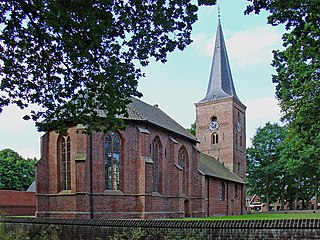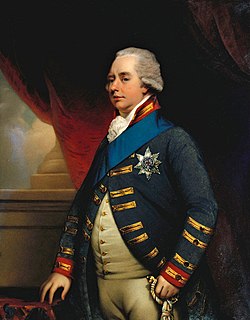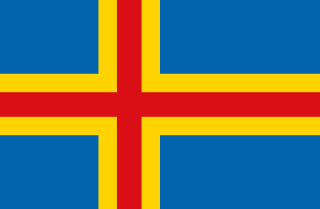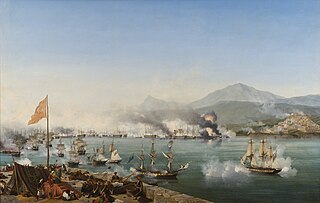
The Battle of Navarino was a naval battle fought on 20 October 1827, during the Greek War of Independence (1821–32), in Navarino Bay, on the west coast of the Peloponnese peninsula, in the Ionian Sea. Allied forces from Britain, France, and Russia decisively defeated Ottoman and Egyptian forces trying to suppress the Greeks, thereby making much more likely the independence of Greece.

Field Marshal and Count Jacob Pontusson De la Gardie was a statesman and a soldier of the Swedish Empire.

Pavel Stepanovich Nakhimov was one of the most famous admirals in Russian naval history, best remembered as the commander of naval and land forces during the Siege of Sevastopol during the Crimean War.

Lennart Georg Meri was an Estonian statesman, writer, and film director. He served as the second President of Estonia from 1992 to 2001. Meri was among the leaders of the movement to restore Estonian independence from the Soviet Union.

Sir Edward Codrington, was a British admiral, who took part in the Battle of Trafalgar and the Battle of Navarino.
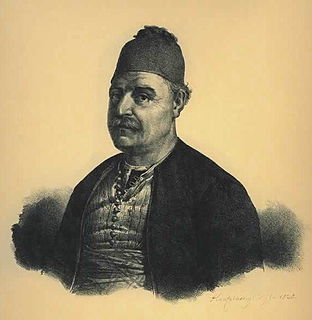
Andreas Vokos, nicknamed Miaoulis, was a Greek admiral and politician who commanded Greek naval forces during the Greek War of Independence (1821–1829).
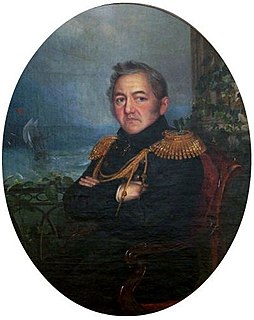
Admiral Mikhail Petrovich Lazarev was a Russian fleet commander and an explorer.
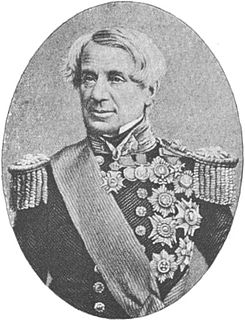
Admiral Edmund Lyons, 1st Baron Lyons was an eminent British Admiral of the Royal Navy, and an eminent British diplomat, who was responsible for encouraging the Crimean War, during which he was Commander-in-Chief of the Mediterranean Fleet, and for the securing the subsequent allied victory in the conflict, through his efforts at the Siege of Sevastopol (1854–1855) with both the Navy and the British Army.
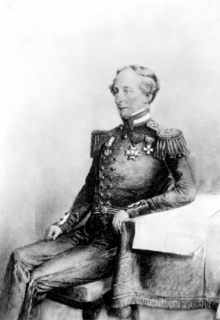
Sir Robert Lambert Baynes was a British Royal Navy admiral who as Commander-in-Chief, Pacific Station prevented the 1859 Pig War from escalating to a major conflict between the United States and the United Kingdom. Baynes joined the Royal Navy in 1810 and served in the Napoleonic Wars and the War of 1812. He took part in the Battle of Navarino in 1827 during the Greek War of Independence. He was promoted to captain in 1828 and commanded the vessels HMS Andromache and HMS Bellerophon and served as one of the senior officers in the Baltic Sea during the Crimean War. In 1857, he was made Commander-in-Chief, Pacific Station.
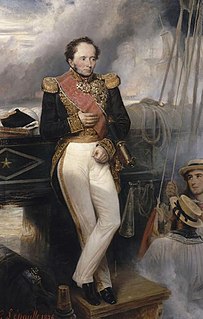
Marie Henri Daniel Gauthier, comte de Rigny was the commander of the French squadron at the Battle of Navarino in the Greek War of Independence.

Grigory Andreyevich Spiridov was a leading Russian naval commander and admiral (1769).

Pierre René Hubert Marie "Rene" van der Linden is a retired Dutch politician and diplomat of the Christian Democratic Appeal (CDA).
Lodewijk is the Dutch name for Louis. In specific it may refer to:

The Polish–Swedish War (1600–11) was a continuation of struggle between Sweden and Polish–Lithuanian Commonwealth over control of Livonia and Estonia, as well as the dispute over the Swedish throne between Charles IX of Sweden and Sigismund III of Poland.

Count Fyodor Logginovich Geyden was a Russian military commander of Dutch extraction, who served in the Imperial Russian Army. He served as the Governor-General of Finland 1881–1898. Geyden's 17-year office in the Grand Duchy of Finland encompassed the entire reign of Alexander III of Russia, who appointed him at the start of his own reign, to succeed the courtly and diplomatic Count Nikolay Adlerberg), and four first years of reign of Nicholas II of Russia.

Jan Hendrik van Kinsbergen, or Count of Doggersbank, was a Dutch naval officer. Having had a good scientific education, Van Kinsbergen was a proponent of fleet modernization and wrote many books about naval organization, discipline and tactics.

The Polish–Swedish War (1617–18) was a phase of the longer Polish–Swedish War (1600–29). It continued the war of 1600–11 and was an attempt by Sweden to take Polish pressure off Russia. The Polish–Lithuanian Commonwealth was then also fighting Tartars and the Ottoman Empire. Russia and Sweden were at that stage allied, prior to the Ingrian War, part of Russia's Time of Troubles. The 1617–18 war's cause was a dispute over Livonia and Estonia, and a dispute between Sigismund III Vasa and Gustavus Adolphus over the Swedish throne.
Willem van Oranje (1934) is a Dutch drama film produced, co-written, and directed by Jan Teunissen. The film portrays the life of William the Silent, and the origins of the Dutch Revolt.
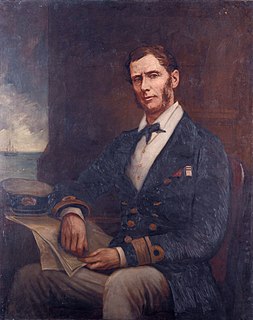
Admiral of the Fleet Sir Henry John Codrington KCB was a Royal Navy officer. As a junior officer, he saw action during the Greek War of Independence and was present at the Battle of Navarino. He later undertook a survey of enemy positions prior to the bombardment of Acre during the Egyptian–Ottoman War.




